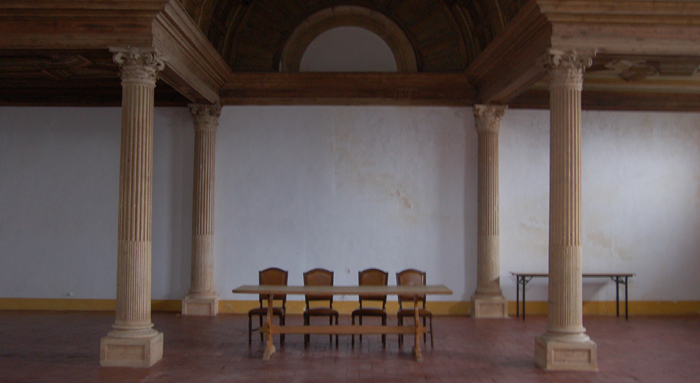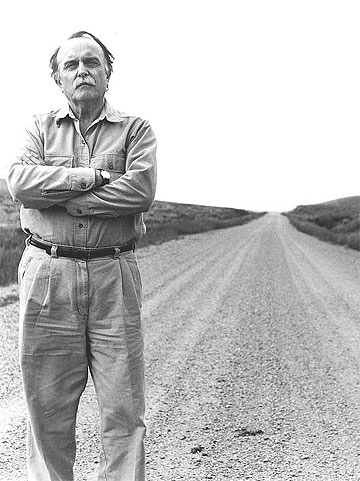Alvin Lucier: I am Sitting in a Room (1969)
The composer's websiteInterview with the Composer


 Alvin Lucier (1931 - ) |
Alvin Lucier is considered among the most cerebral of the so-called minimal composers. Born in Nashua, New Hampshire and educated at Yale and Brandeis, he currently teaches at Wellesley College. In the late 1960s, he became involved in an experimental composer collective along with composers Gordon Mumma and Robert Ashley known as the Sonic Arts Union. The group performed together for over a decade, using each other in their compositions and artworks. Lucier was a particularly inteesting case for the others because he had a stutter which they liked to exploit. Lucier's music tends to be concered with physical space, acoustic resonance and the acoustical beating that results when two pitches that are very close in frequency are played at the same time. Thus, in I am Sitting in a Room a text is recorded over andover again on tape using a microphone. The acoustics within the room that it is being recorded act as a natural filter for the sounds heard by the microphone. Consequently with each rerecording the natural frequencies of the room and the most prominent features of the sound of the spoken text are enhanced, while the least strong characteristics disintegrate into unitelligible sound. The process is similar to what results when a photograph is photocopied over and over. Things to Note I Am Sitting in a Room is an example of process music. The score specifies a process that is to be followed to make a sonic realization. This original recording, made by Lucier in his own living room, is but one realization of the instructions of the score. At the same time, the listener is asked to be an observer rather than participant in the musical work. The score reads as follows: I am sitting in a room (for voice and electromagnetic tape, 1969) Necessary Equipment: One microphone, two tape recorders, amplifier, and one loudspeaker. Choose a room the musical qualities of which you would like to evoke. Attach the microphone to the input of tape recorder #1. To the output of tape recorder #2 attach the amplifier and loudspeaker. Use the following text or any other text of any length: I am sitting in a room different from the one you are in now. I am recording the sound of my speaking voice and I am going to play it back into the room again and again until the resonant frequencies of the room reinforce themselves so that any semblance of my speech, with perhaps the exception of rhythm, is destroyed. What you will hear, then, are the natural resonant frequencies of the room articulated by speech. I regard this activity not so much as a demonstration of a physical fact, but, more as a way to smooth out any irregularities my speech might have. Record your voice on tape through the microphone attached to tape recording #1. Rewind the tape to its beginning, transfer it to tape recorder #2, play it back into the room through the loudspeaker and record a second generation of the original recorder statement through the microphone attached to tape recorder #1. Rewind the second generation to its beginning and splice it onto the end of the original recorder statement on tape recorder #2. Play the second generation only back into the room through the loudspeaker and record a third generation of the original recorded statement through th emirophone attached to the tape recorder #1. Continue this process thorugh many generations. All the generations spliced together in chronological order make a tape composition the length of which is determined by the length of the original statement and the number of generations recorded. Make versions in which one recorded statement is recycled trough many rooms. Make versions using one or more speakers of different languages in different rooms. Make versions in which, for each generation, the microphone is moved to different parts of the room or rooms. Make versions that can be performed in real time. The original 1969 recording (external link) |